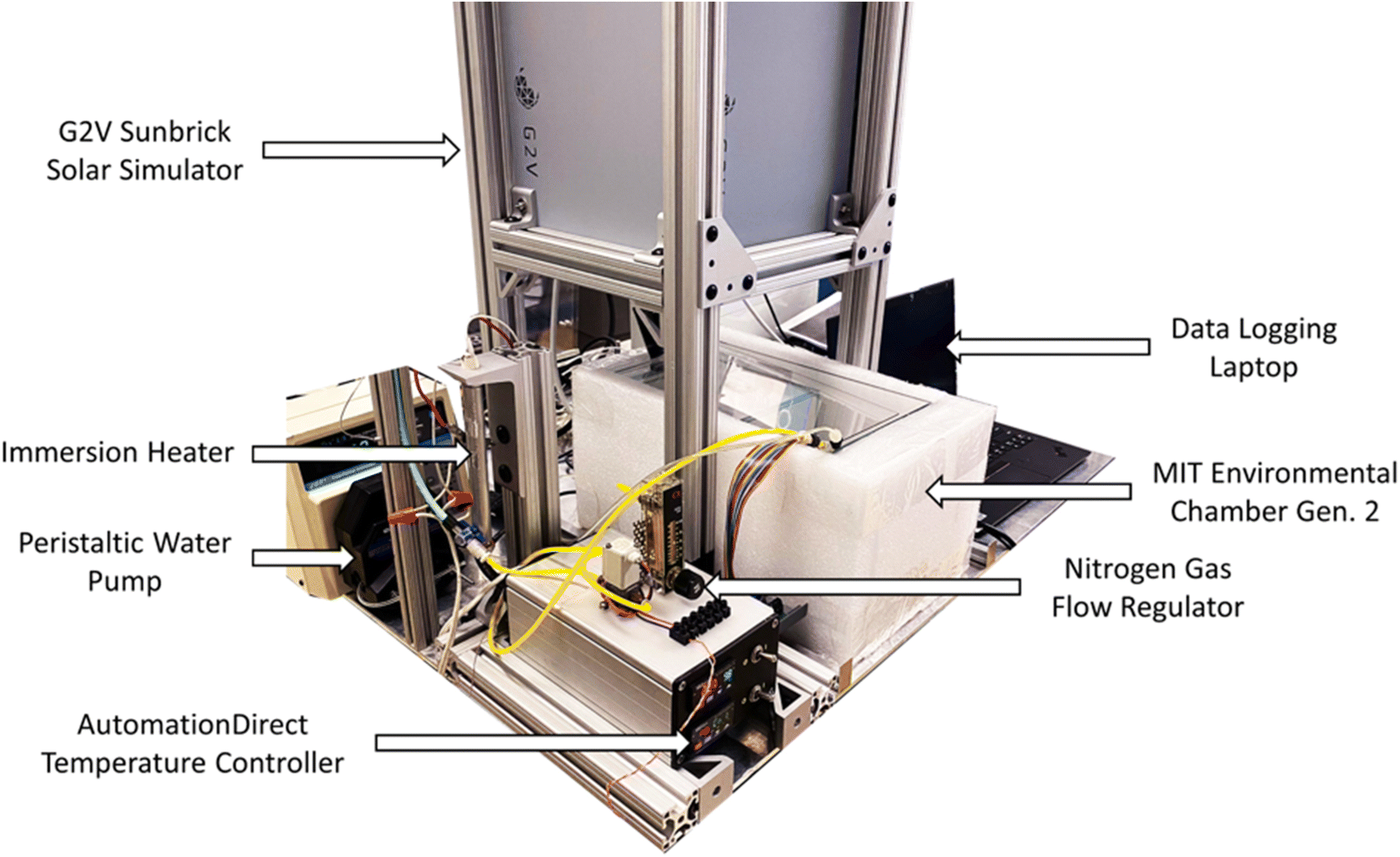Semiconductor Degradation Chamber Design

Paper: [link]
Code: [link]
My Contributions:
-
Created CAD models of one chamber system (SolidWorks)
-
Contributed to writing control code (C++)
-
Designed and built control circuits of one chamber system
-
Conducted semiconductor degradation experiments
-
Contributed to writing paper
Quantifying and predicting long-term stability in realistic operating environments is of interest to a broad range of materials, from energy devices to marine and offshore environments. However, accelerated environmental testing today is often time-intensive and expensive, limiting the speed of materials innovation. Commercial stability chambers can cost tens of thousands of US dollars, with fully integrated solar device stability testing systems can cost up to US$60,000, and may require additional modification to generate consistent-quality degradation data for a specific application. To meet this need, we introduce a low-cost, open-source environmental chamber. Our chambers range from US$2,000–$7,500 depending on configuration and offer environmental control as well as in situ monitoring. Although the design principles of the chamber are broadly applicable, we designed the chamber specifically to test halide perovskites, a class of functional materials with nascent applications in photovoltaic absorbers, light-emitting devices, and X-ray detectors, among others.


Another key element to high-throughput testing is the development and validation of proxy measurement techniques. We posit that the many physically- and chemically-meaningful signals have optical signatures that are often overlooked. Here, we use a visible-light camera as a proxy for perovskite phase transitions, validate this proxy using X-ray diffraction (XRD), and describe the limits under which this proxy measurement is valid. Using an optical proxy for stability accelerates the rate of data acquisition by more than an order of magnitude and enables low-cost in situ measurements during environmental degradation.